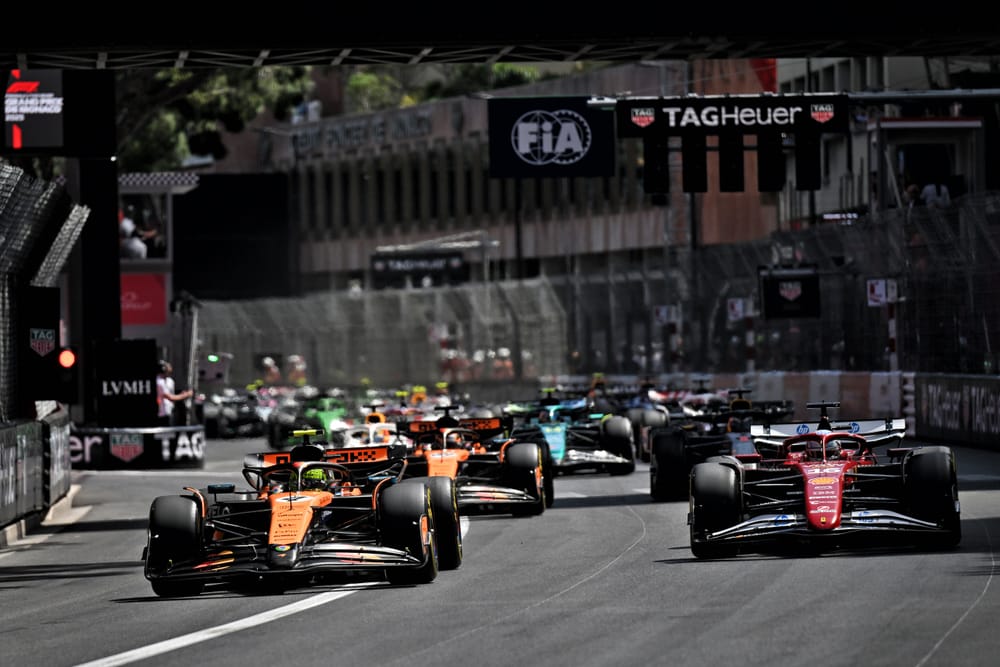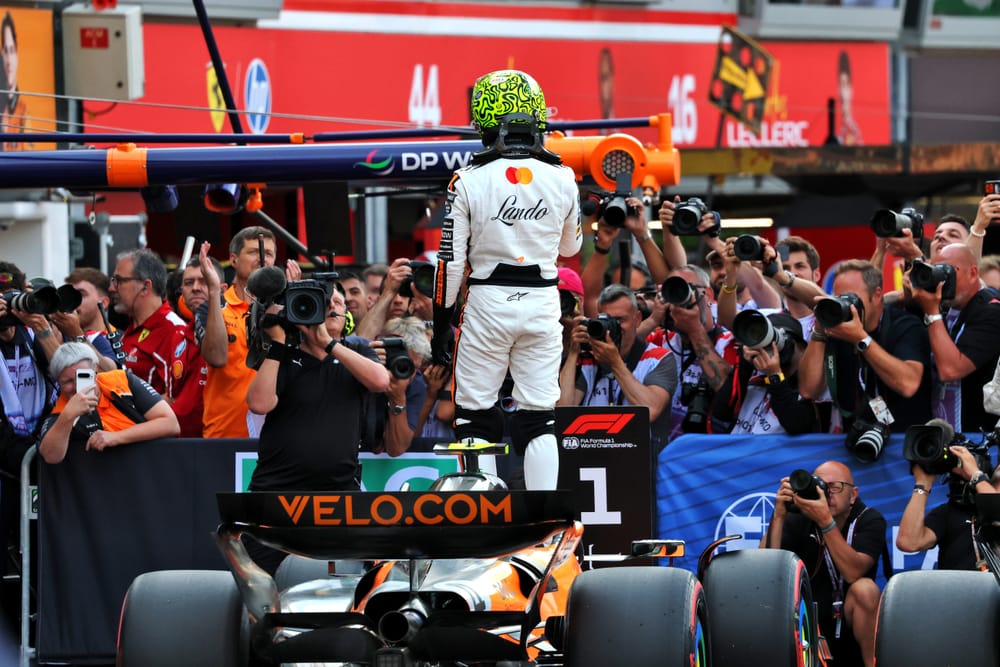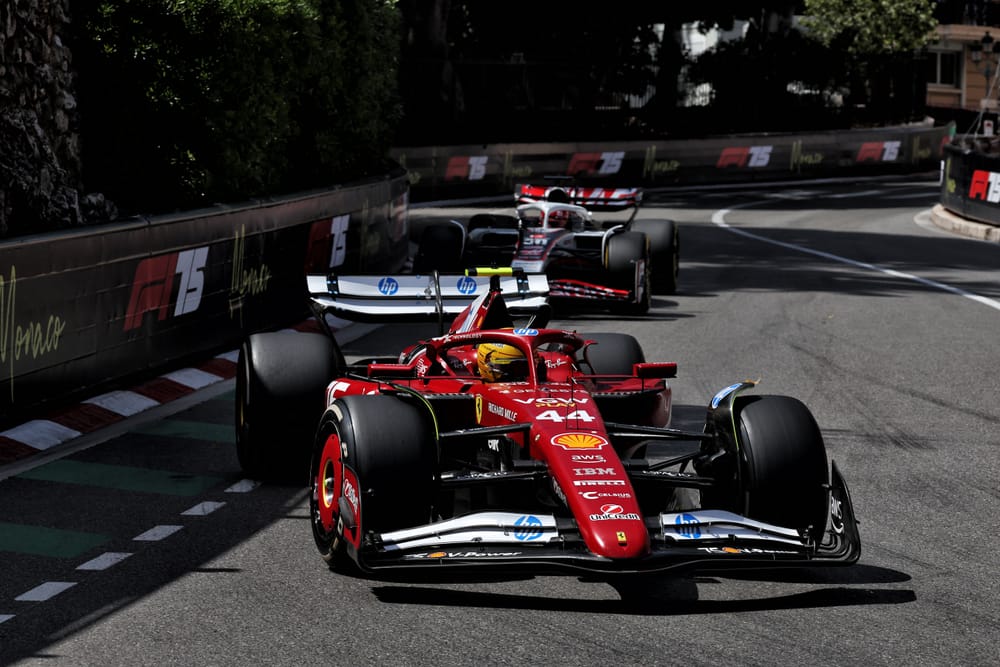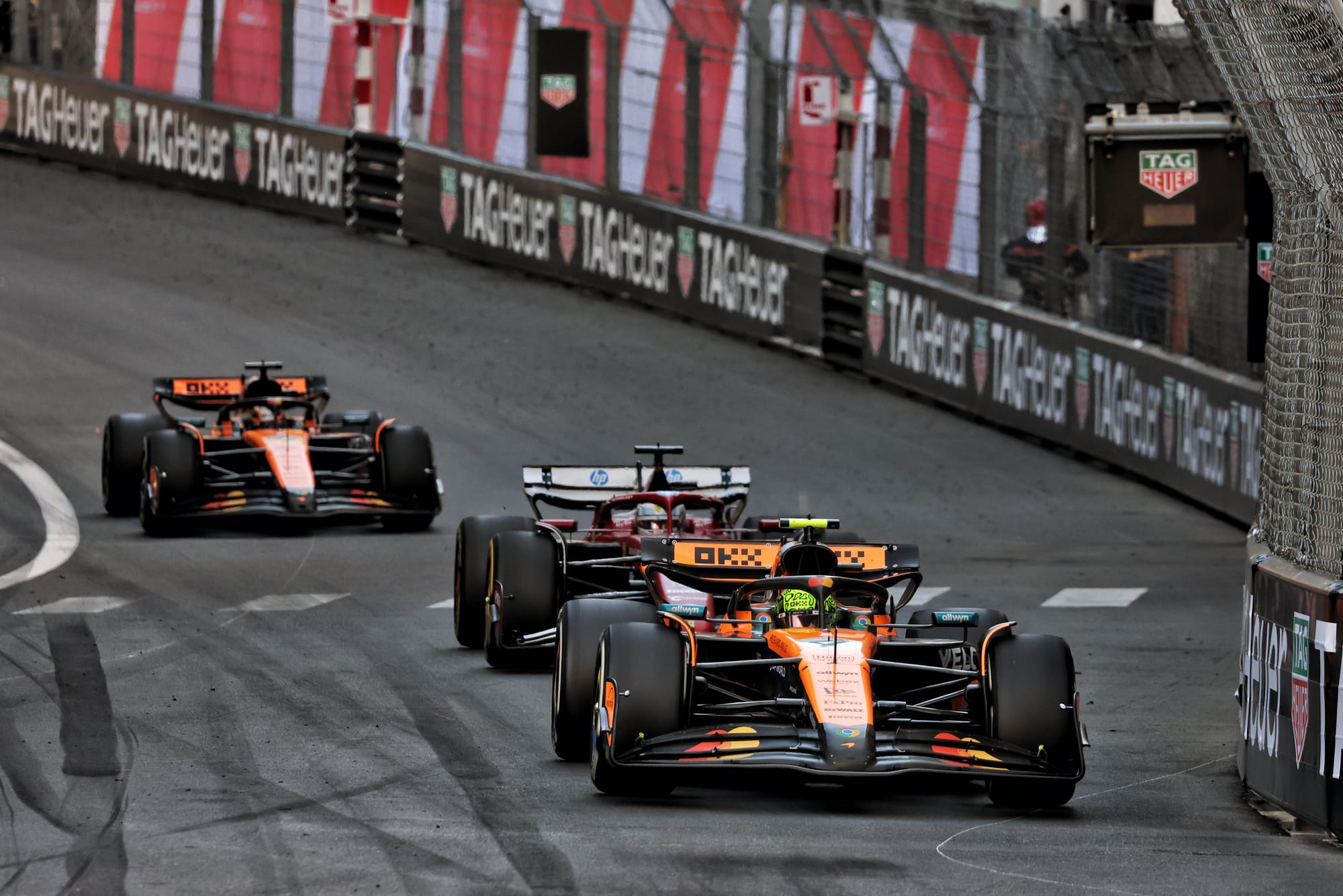An experimental Monaco Grand Prix didn’t quite fire into life as Formula 1 hoped, but it was a fascinating weekend and a storied race.
Here are eight things we learned from Monte Carlo.
More to come from ‘smarter’ Norris
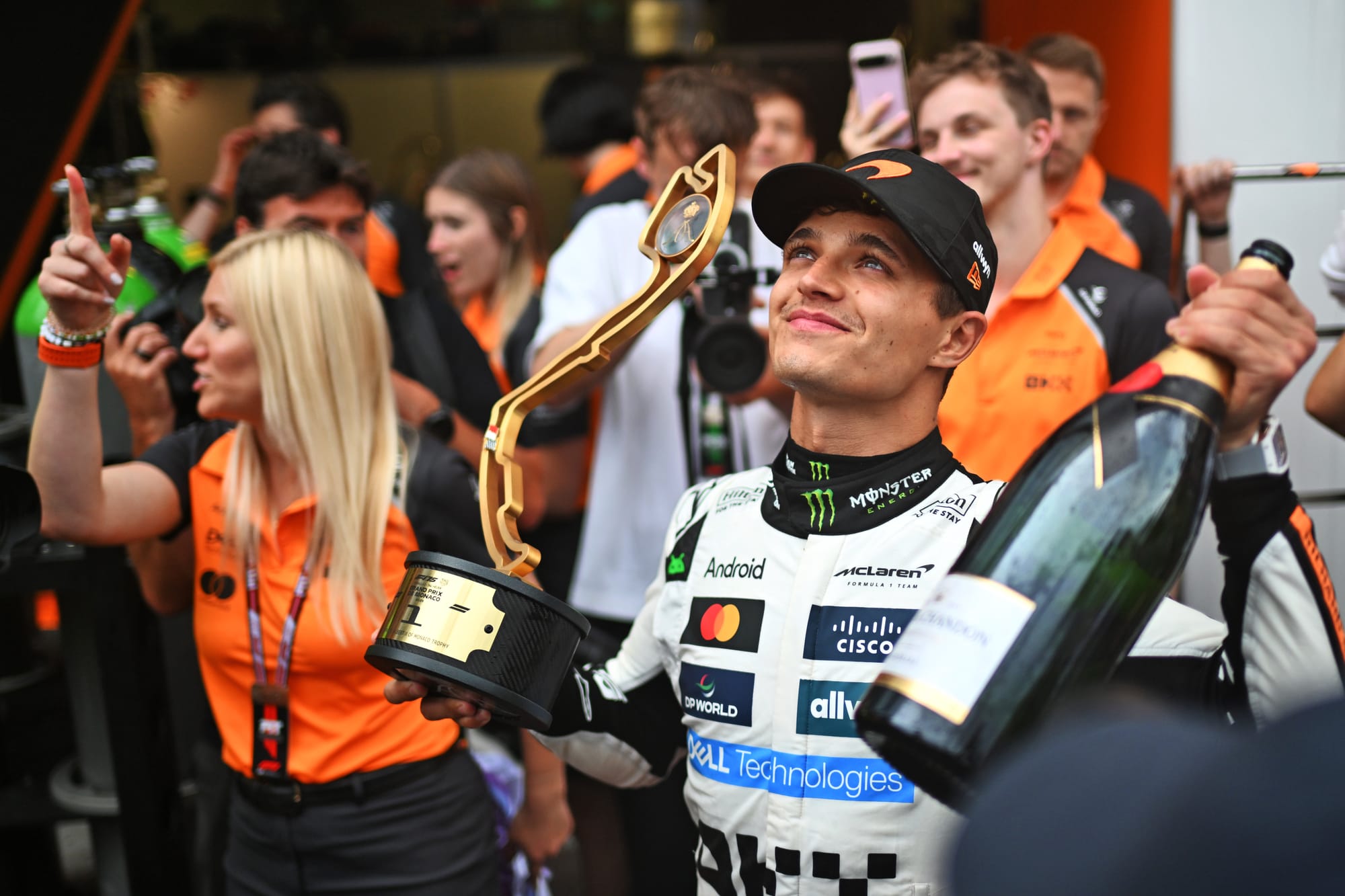
Lando Norris scored pole position and won a grand prix for the first time since the season opener in Australia.
In Monaco, one does tend to lead to the other, so this was an ideal place for Norris to banish his qualifying hoodoo.
Norris felt he was driving better and “smarter” in Monaco after a concerted effort to tidy up the approach that had led to too many errors this season.
It’s no secret that Norris has struggled more than team-mate Oscar Piastri with the McLaren car changes that have dulled the feeling the drivers get from the front axle.
McLaren still hopes to improve the core issue during the season but until then it has tried to help with set-up tweaks and just working with both drivers to help them understand what the car is doing and why in certain situations.
According to team boss Andrea Stella, Norris has now been rewarded for his part in this process, and was able to drive quickly and consistently all week in Monaco - whereas, unusually for this year, it was Piastri who had good peaks but lost his rhythm at key moments.
Norris didn’t quite nail it in qualifying, as Stella pointed out there was some laptime left on the table and believes there is still more to come from Norris in being at his absolute best over one lap.
“I kind of have a sense there is quite a lot more to be extracted,” said Stella.
But this was an important step and in Monaco it was enough. Most of the work was done in qualifying for Norris to score a very important victory.
Ferrari’s reprieve isn’t a full revival
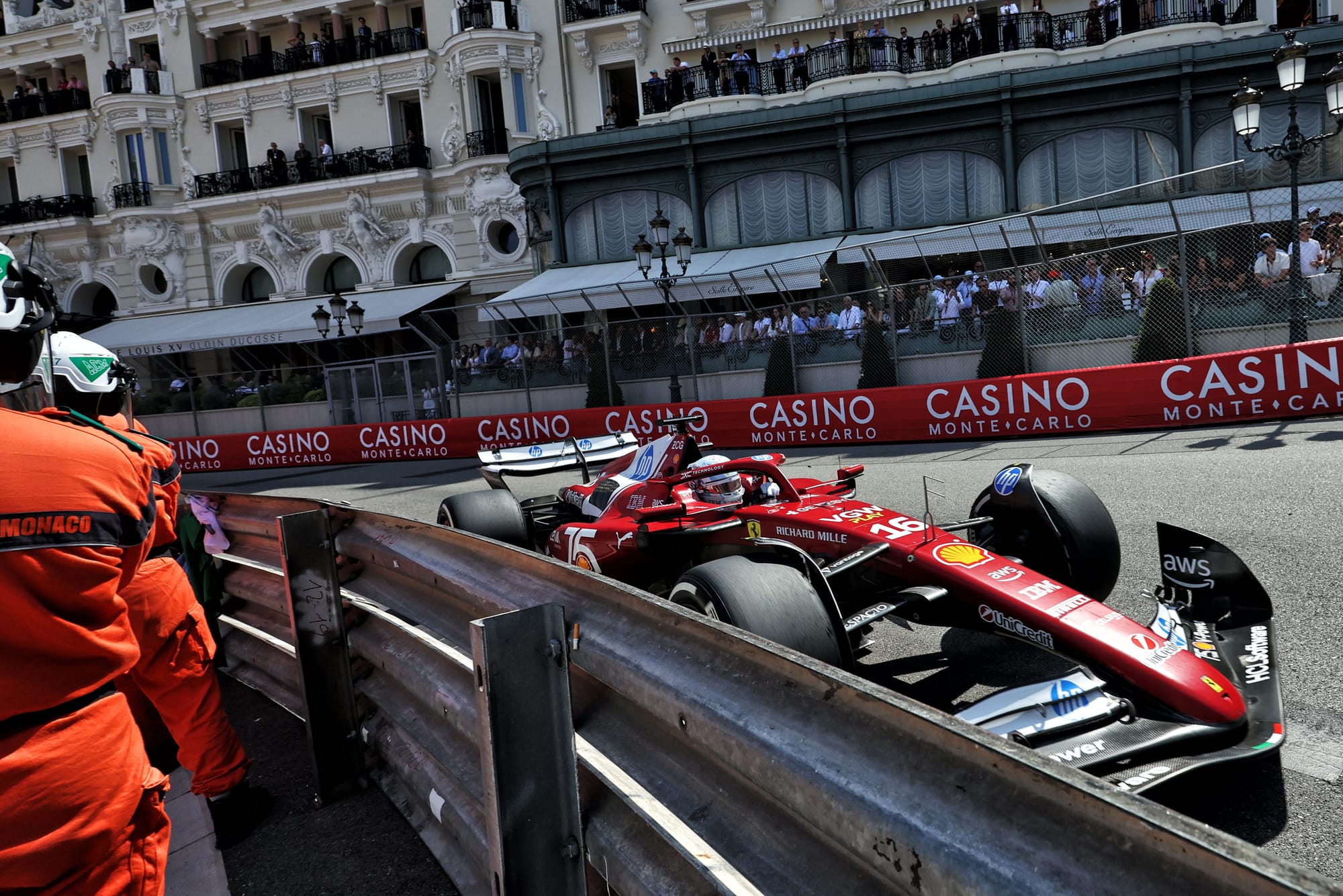
Ferrari had its strongest weekend of the year in Monaco, with Charles Leclerc qualifying and finishing second. That’s despite the 2024 Monaco winner being pessimistic about his chances heading into the weekend.
But while Leclerc was pleasantly surprised that his Ferrari was a genuine victory threat for the first time in 2025, he knows it’s a one-off. The car fundamentally has a good mechanical package in terms of riding bumps and kerbs, which helped the Ferrari SF-25. That, combined with Leclerc’s virtuosity when it comes to dancing between the walls, meant the Ferrari was seriously fast – albeit not quite as quick as McLaren.
The trouble is, it’s only on an extreme outlier circuit like Monaco that Ferrari’s strength mechanically comes into play.
This is because for more conventional circuits, Ferrari must compromise its set-up to achieve the best compromise between high and low-speed corners and ensure that bottoming out, and therefore plank wear, isn’t a problem. The net result is that low-speed strength is sacrificed and becomes a weakness.
So it’s back to business as usual in Barcelona this weekend then? Well, maybe, or maybe not – as team principal Fred Vasseur points out the technical directive on front wing flexibility kicks in and that could change the game.
Still, while there is hope for Ferrari, it’s not because its Monaco revival was a breakthrough.
Lawson’s breakthrough was overshadowed
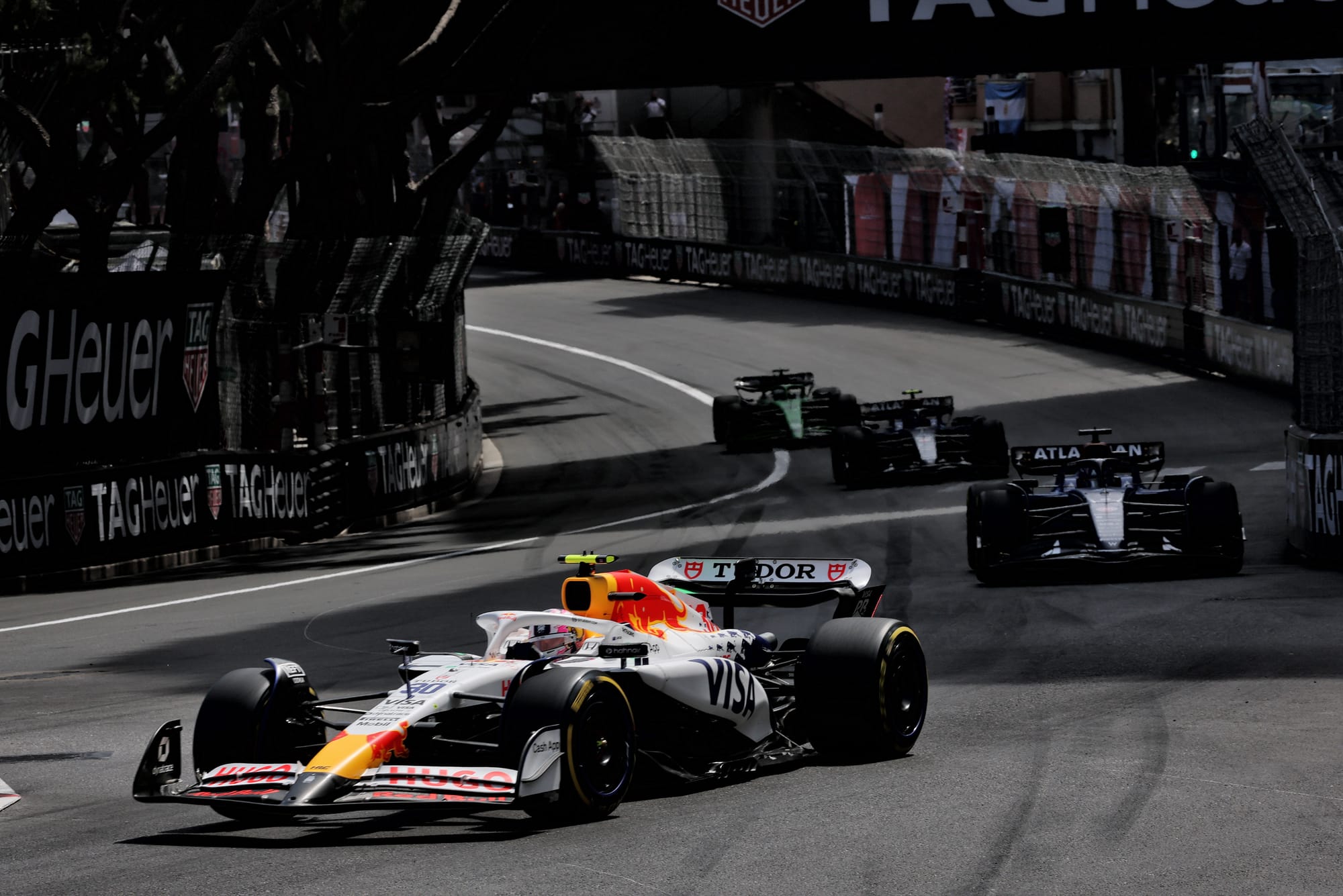
Liam Lawson was adamant going into the Monaco weekend that things had clicked for him back at Red Bull’s second team several races ago, he just didn’t have a result to show for it.
Well, now he does, as the ex-Red Bull Racing driver has finally banked his first points of the season.
It was a much needed breakthrough in terms of final result for Lawson, although it would be remiss not to point out he was still overshadowed pretty much all weekend by his rookie team-mate Isack Hadjar.
Lawson did a good job, no question, and played the team game perfectly on Sunday with the first case of backing up other cars that led to more teams deploying such tactics later on.
But he was the slower Racing Bulls driver as Hadjar made a huge impact on his first trip to Monaco.
Initially that came in the wrong way as Hadjar hit the wall twice in FP2. He was lucky the first one didn’t end that session right at the start - if that happened, and he lost an hour of practice, Hadjar’s weekend could have looked very different.
Instead he was able to take full advantage of his second chance, and what he did to qualify sixth-fastest was exceptional for a rookie.
To then consolidate that with sixth in the race, his best result in F1, was a deserved reward for an outstanding Monaco debut - even if he said he was struggling to stay awake at times because the carefully managed stints were so boring!
Aston Martin’s showing signs of life
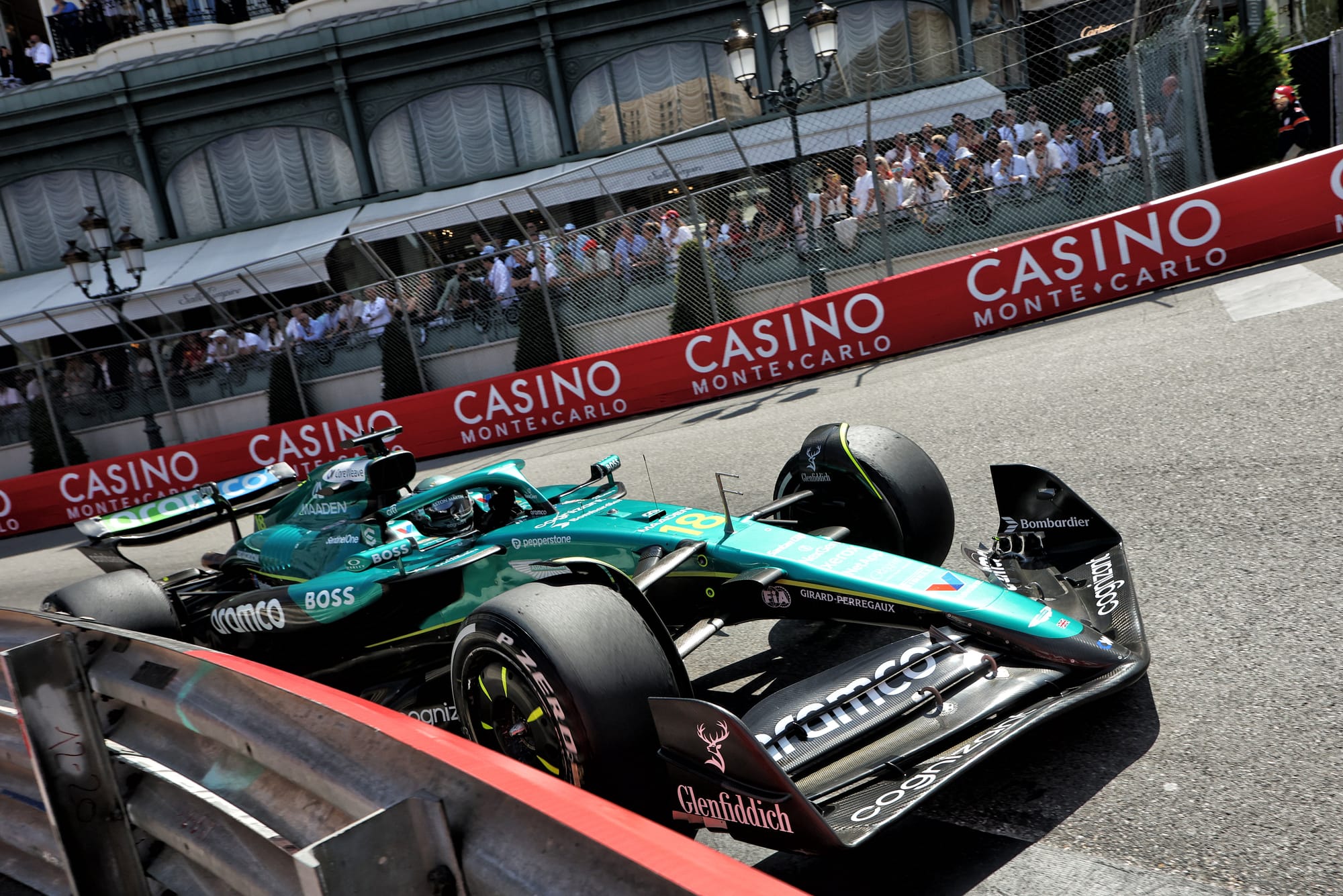
Fernando Alonso’s run of bad luck continued with an ERS problem that he’d been managing for some time ultimately forcing him out of the race while on course for seventh place, but there are reasons for optimism at Aston Martin.
Earlier in the season, slower corners were a weak point, with Alonso complaining that the car was dying in the low-speed corners.
Yet Alonso performed strongly at Monaco. And this is a little different to Ferrari’s situation as while there was no need to compromise the set up to work across a wide corner-speed range, the upgrade package introduced a week earlier at Imola was reckoned to have improved the car across the board.
Given Aston Martin had been poor last time F1 raced on a street track in Miami, its Monaco form suggested the progress is genuine.
And with Adrian Newey on site in green for the first time, and having now breathed a little magic on the 2025 car despite his main focus being on next year, Aston Martin’s performance is trending in the right direction.
The problem now is turning that speed into points.
Antonelli’s struggled on the C6
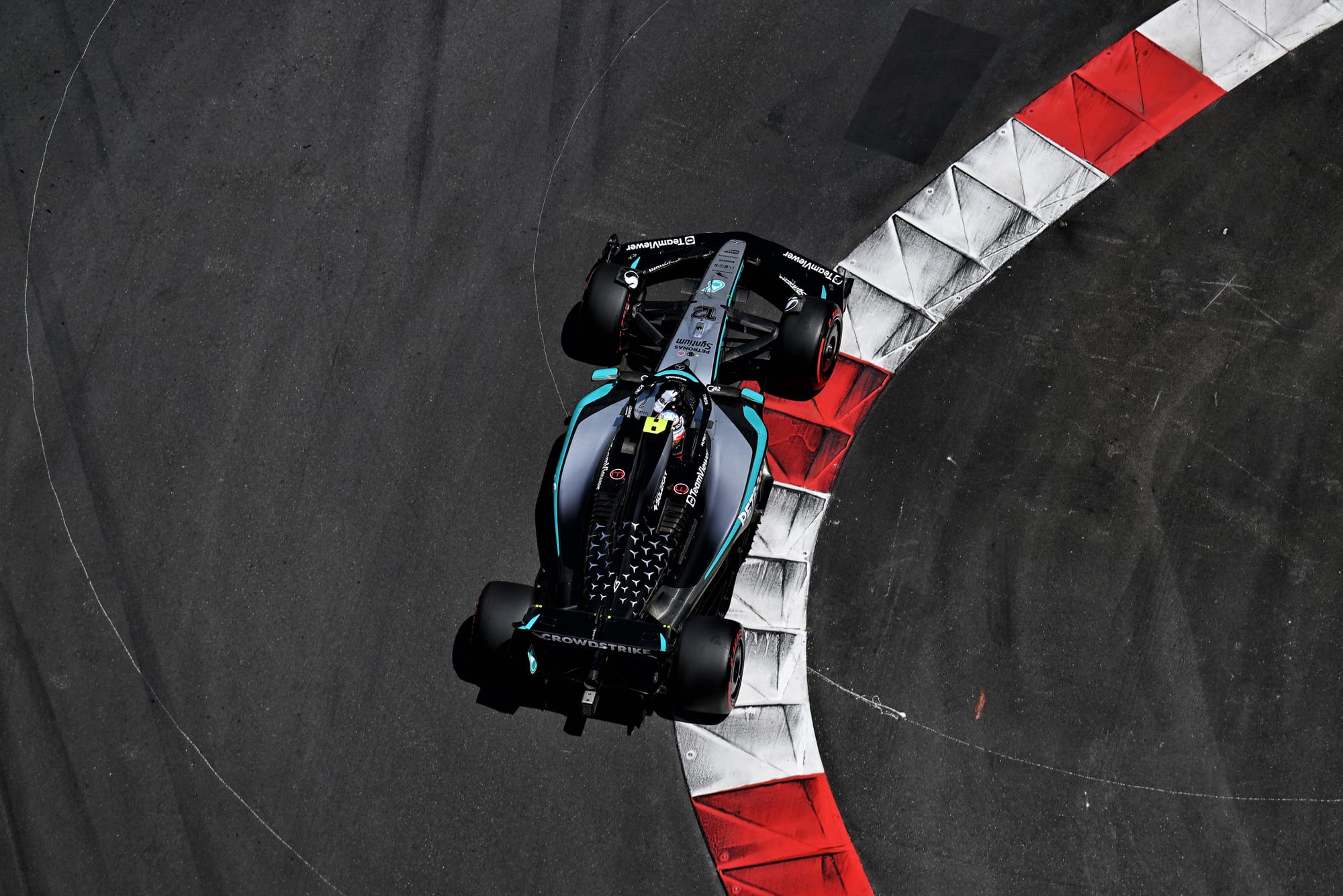
Kimi Antonelli admits himself that he needs a “reset” after two consecutive difficult Formula 1 weekends.
His poor performance at the Emilia Romagna Grand Prix was widely put down to not being in the right headspace, as a combination of promotional events and extra-curricular fun like inviting his classmates to the track took his focus and energy a bit too much away from what was needed to deliver on track.
But even in Monaco things did not click, and his weekend in the Principality was derailed by a qualifying crash in Q1 as he clipped the armco on the entry to the Nouvelle Chicane and then ran off into the barriers on the outside.
While the Imola/Monaco disappointments do not appear linked, there does seem to be a common trend. And that is that the young Italian has struggled in particular to get on top of the quirks of Pirelli’s softest C6 that has appeared in both venues.
The compound is certainly a tricky one for teams and drivers to get on top of.
Mastering its very peaky grip especially on its first lap, the extreme thermal management needed to try to get both axles into the right temperature operating window, plus coping with the feeling of the movement as the rubber is put under load in corners are all things that Antonelli himself still needs to do better with.
He will be relieved that this weekend’s Spanish GP sees F1 shift to its hardest compound choices, but the C6 will be back straight after in Canada.
Harsher penalties are still needed for gaming the system
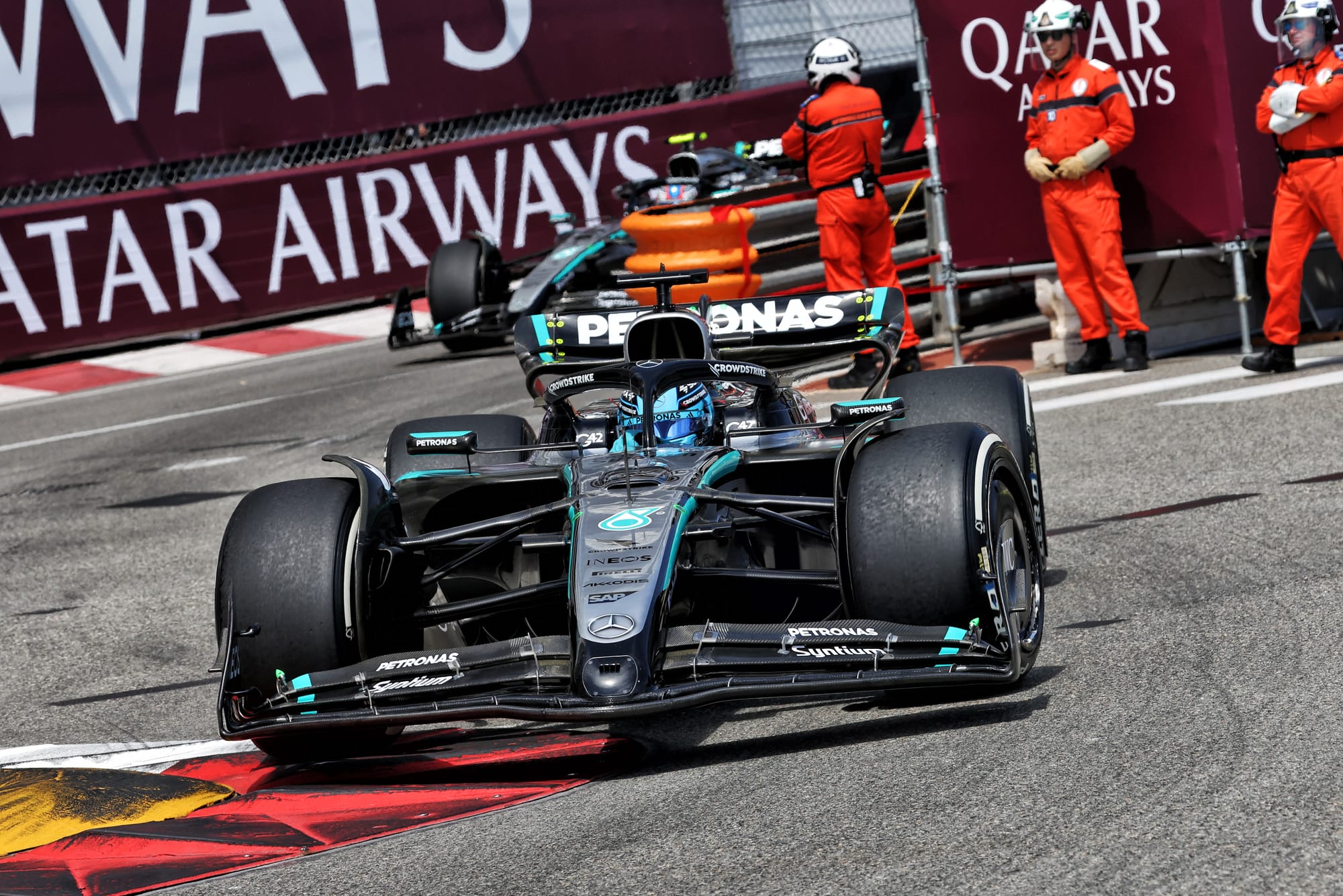
The knock-on effect of the Racing Bulls tactic in Monaco was for Williams to do the same to hold onto a low points finish with both cars, having been backed into the midfield.
And this in turn led to what Alex Albon called a cheeky move from George Russell to deliberately cut the chicane to get ahead of the deliberately slow Williams.
Russell did that because he was happy to take the usual 10-second penalty for going off-track and gaining advantage - and was surprised to get slapped with a drivethrough penalty instead.
This was because the FIA had made it clear before the race that, given the potential for such tactics to be deployed, any deliberate corner cutting to get ahead of a slow car could be dealt with more severely than usual.
But, as Russell pointed out, he still finished in a higher position by doing what he did. Because the drivethrough was still not sufficient to fully cancel out the gain in laptime by getting ahead of Albon and driving flat out.
Russell said that showed “the system’s pretty flawed” and while he was referencing the two-stop strategy experiment, the same could also be said of F1’s penalties.
Regardless of the fact that what Russell did was understandable in the circumstances, clearly even harsher penalties are needed to avoid the most extreme cases of drivers gaming the system.
Alpine nadir worse than imagined
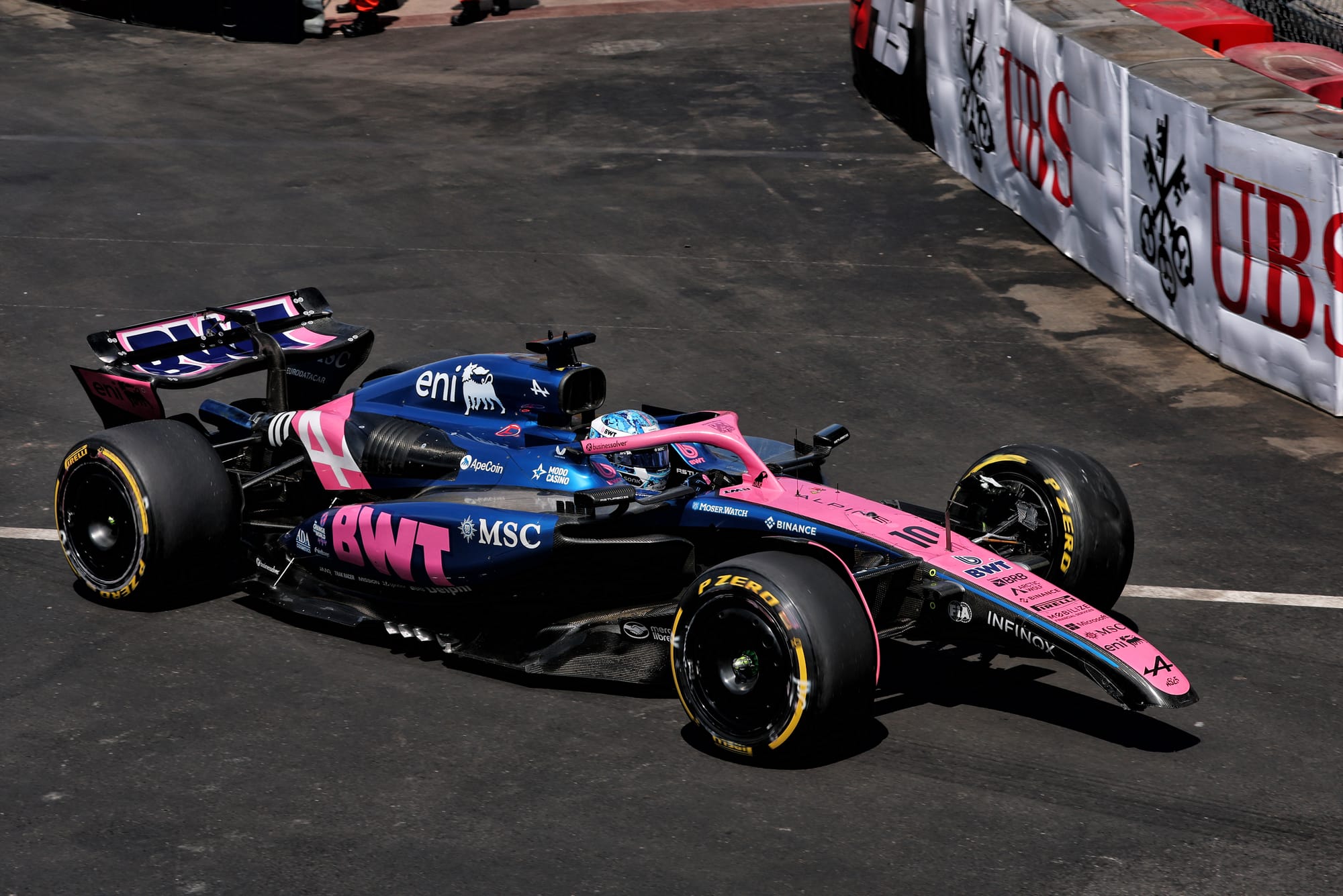
Monaco set a new basement for how bad Alpine could be in 2025.
Prior to the weekend, it was at best capable of snapping at the heels of the top four teams and at worst buried deep in midfield mediocrity. But in Monaco, it was clearly the worst car.
To underline just how bad it was, the best lap set by an Alpine was 1.1 seconds slower than last year – at a point in the season when the team was still deep in the mire. So what went wrong?
Well, the team went into the weekend confident of a good performance, but the car proved terrible over the bumps and kerbs. As Pierre Gasly admitted, that’s a known weakness of the car.
To make matters worse, Gasly rear-ended Yuki Tsunoda early on, while team-mate Franco Colapinto spent most of the race in traffic on “a Sunday drive”.
In need of results given this is the second of only five events he’s been officially confirmed for, he struggled for confidence, particularly on the C6 Pirellis.
Considering Alpine managed to score a point last year in an overweight, unwieldy car 12 months ago, this was a new low for the team.
Strategy shake-up was mixed
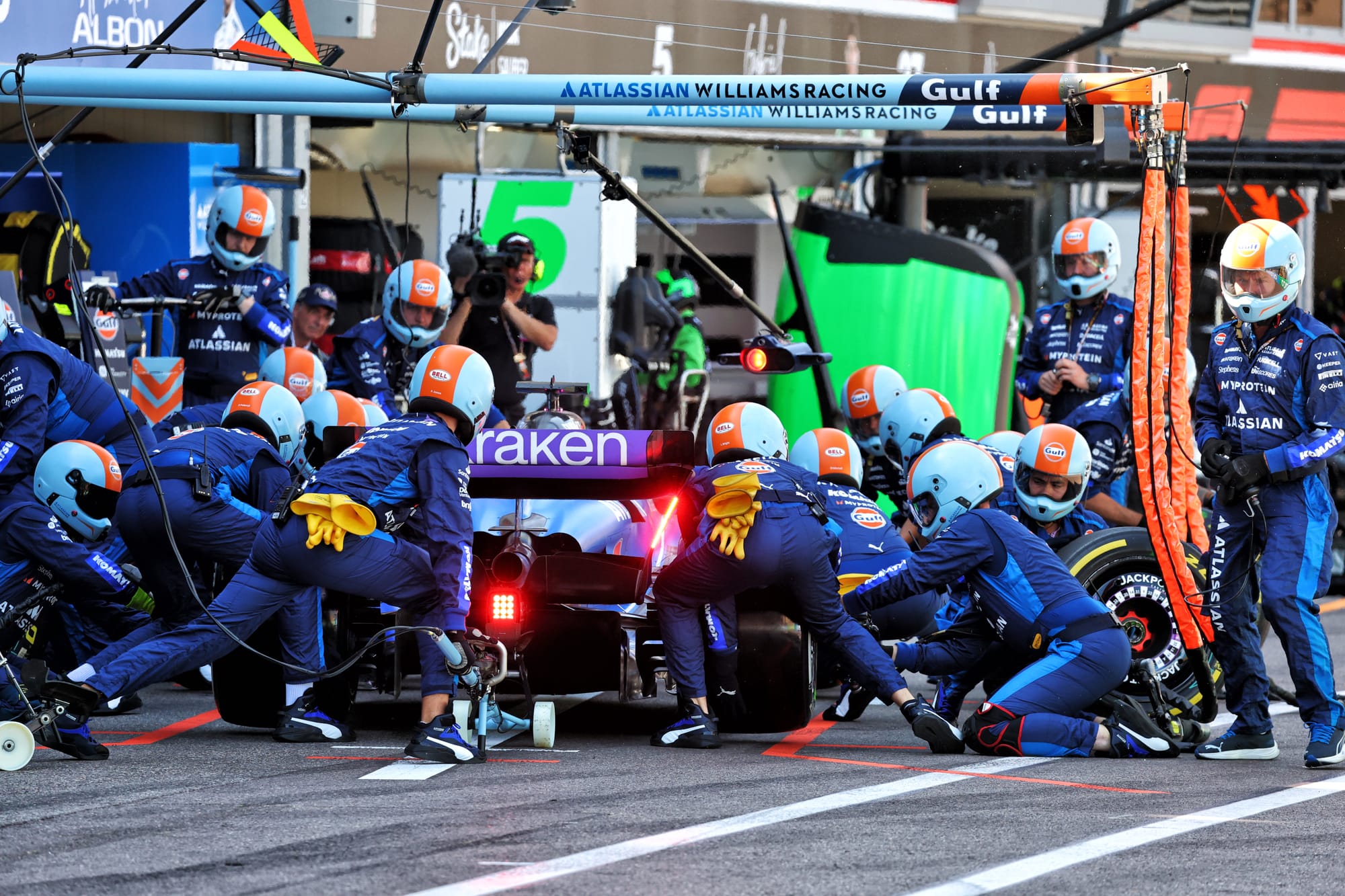
Whether F1’s move to make Monaco a two-stopper was viewed as a success or a failure is very much down to opinion.
But what it has done is give grand prix racing’s bosses some food for thought about where things go from here.
On the plus side, the mandatory two stops threw in a fair degree of strategy uncertainty – with varied thoughts in play at the front of the field about how best to map the way to the finish.
As Red Bull and Max Verstappen held on as long as possible in the hope of a safety car or red flag allowing them to steal the win from Lando Norris, the destiny of the win hung in the balance right until the end.
But on the downside was the blatant manipulation of race results further down the pack, as first Racing Bulls, then Williams and finally Mercedes all played games between their two cars to block rivals and open up gaps. This was not racing in its purest sense.
The criticisms these tactics triggered, even though teams well knew in advance this was the game to play at Monaco, has exposed the fact that there is nothing F1 will be able to do to stop things like this happening for as long as cars struggle to overtake there.
Sorting out ways to make passing at least possible is ultimately what F1 needs to focus on to prevent the park the bus tactics becoming the common tactic in 2026.


